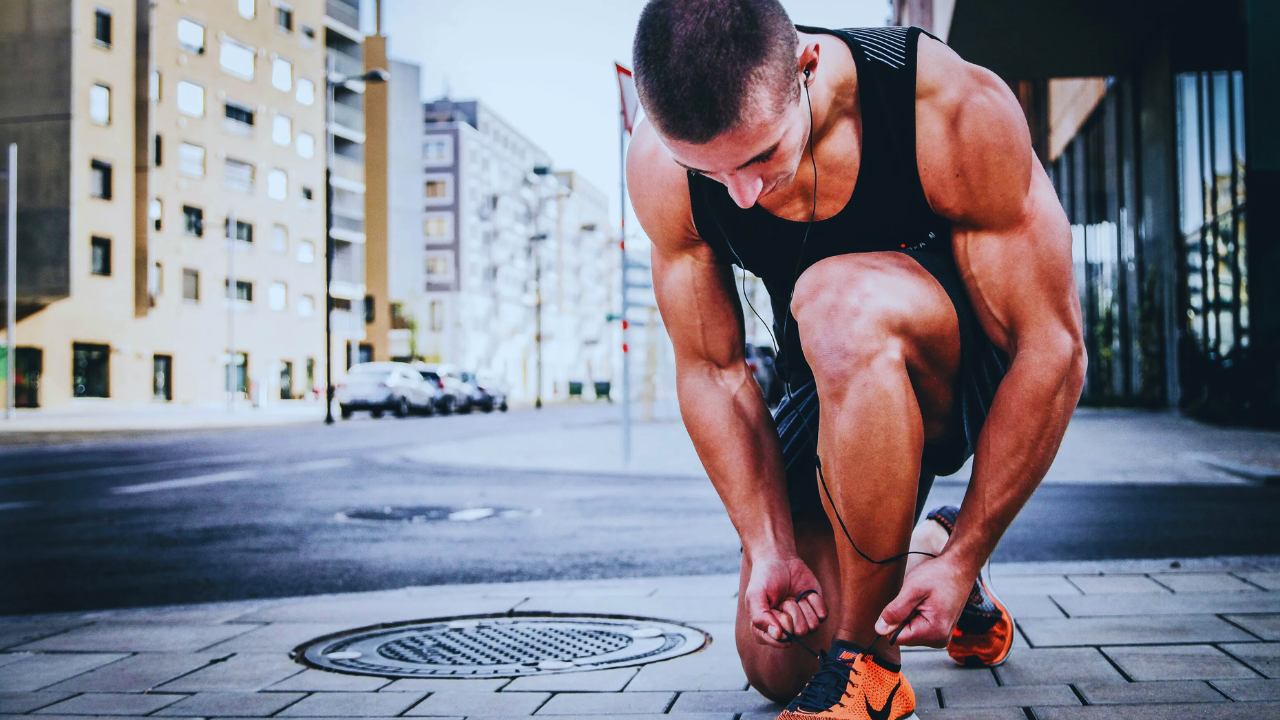Journey at home can be an exciting and accessible option for beginners, especially when faced with the uncertainty of gym environments or expensive memberships. The beauty of working out at home is that you have the freedom to go at your own pace while focusing on consistency, which is key for long-term success. With minimal equipment or even none at all, you can begin by incorporating bodyweight exercises that target all major muscle groups, gradually building strength and endurance. This guide will cover essential tips to help you stay motivated, stay injury-free, and see continuous progress, regardless of where you’re starting from.
The first step in starting your home fitness journey is to set clear and achievable goals. Begin by focusing on small, attainable targets that help build momentum and keep you motivated. This could include committing to a few short workouts each week or mastering a new exercise each month. Establishing a routine will also help ensure that you stick with it. In addition, don’t forget the importance of rest and recovery—these are vital components of a well-rounded fitness program. With dedication and consistency, fitness at home can be both enjoyable and rewarding, leading to better health and an improved sense of well-being.
Why Fitness at Home?
Exercising at home also offers a unique opportunity to create a personalized workout space that fits your preferences. You can design your environment to be comfortable, motivating, and free of distractions. Whether it’s setting up a designated workout area with yoga mats, resistance bands, and dumbbells, or simply using the living room floor for bodyweight exercises, the choice is yours. This level of control helps ensure that you’re creating a workout atmosphere that makes you feel relaxed and ready to move.
For beginners, home workouts offer a safe and comfortable space to learn new exercises and build strength. In a gym setting, it can often feel intimidating to try new movements or use different equipment, but at home, there is no judgment or pressure. You can start at your own pace, perfect your form, and gradually increase the intensity as you build confidence. Many online resources also provide step-by-step instructions and workout programs tailored for beginners, allowing you to follow along and avoid any confusion or uncertainty.
Finally, home fitness routines can also promote a sense of achievement. Without the need to rely on gym memberships, travel time, or the availability of certain equipment, you have full control over your workout schedule. The consistency of working out from home can help build long-term habits that are crucial for sustained fitness progress. Whether you’re focusing on strength training, flexibility, or cardio, having the ability to do all of this from home encourages a more disciplined and rewarding approach to your fitness journey.
Essential Fitness Tips for Beginners
Starting a fitness routine at home is an achievable goal for beginners, and it doesn’t require fancy equipment or expensive gadgets. The key to success lies in building a simple, realistic, and consistent plan that works for your lifestyle. One of the first steps is setting clear, achievable goals, whether it’s committing to working out a few times a week or gradually increasing the intensity of your exercises. Focus on basic movements like bodyweight exercises to build strength and endurance, and don’t worry about complexity at the start.
Another essential fitness tip is to take it slow and progress at your own pace. Overdoing it in the beginning can lead to injuries or burnout, so start with low-intensity exercises and gradually increase the difficulty. Warm-ups and cool-downs are crucial in preventing injury and reducing muscle soreness, so make them part of every workout. Consistency and proper form should always be priorities, as they contribute to long-term progress. Also, remember that staying hydrated and fueling your body with the right nutrition is just as important as the exercise itself for optimal results.
Set Realistic Goals
One of the key components to success in fitness is setting clear and achievable goals. When you’re just starting, it’s essential to focus on goals that are both realistic and sustainable. Instead of aiming for drastic changes, start by setting smaller, short-term goals such as committing to a workout routine 3-4 times per week. You can also target specific areas, like improving flexibility, building strength, or increasing stamina. As you progress, you can make these goals more challenging to match your growing fitness level. The key is to avoid setting yourself up for failure by pushing too hard at the beginning. Small victories are a great way to stay motivated and track your growth.
Start Slow and Build Gradually
Many beginners make the mistake of overdoing it in the beginning, which can lead to injury or burnout. It’s important to take a slow and gradual approach to fitness. Start with low-intensity exercises such as walking, light jogging, or bodyweight exercises like squats and lunges. Over time, as your body adapts, you can slowly increase the intensity, duration, and frequency of your workouts. Starting slow ensures that you build a solid foundation and gives your muscles time to adjust. It’s important to listen to your body and avoid overexertion during the early stages of your fitness journey.
Warm-Up and Cool-Down
Before you dive into any workout, make sure to properly warm up your body. Warming up increases your heart rate and prepares your muscles for physical activity. Simple warm-up exercises like dynamic stretching, light jogging, or jumping jacks can help you get your blood flowing and improve flexibility. The importance of a cool-down cannot be overstated either. After finishing your workout, take 5-10 minutes to lower your heart rate with gentle movements and static stretches. Cooling down helps to prevent injury, reduces muscle soreness, and promotes flexibility. Both warm-ups and cool-downs are crucial steps that contribute to injury-free and effective workouts.
Consistency is Key
Consistency is the secret to long-term fitness success. It can be tempting to skip a workout or take a day off when you’re not feeling motivated, but remember that results come over time. The more consistent you are, the quicker you’ll start seeing progress. Whether it’s sticking to your workout schedule, eating healthy meals, or getting enough sleep, consistency creates lasting habits. Set a workout schedule that you can realistically stick to, and treat it as an important commitment. Even on days when motivation is low, try to push through and stay on track. Over time, these consistent efforts will lead to remarkable improvements in your fitness levels.
Hydrate and Fuel Your Body
Proper nutrition and hydration are essential for supporting your body during workouts and helping it recover afterward. Staying hydrated is crucial because water helps regulate body temperature, lubricates joints, and transports nutrients to cells. A well-balanced diet is equally important. Focus on fueling your body with wholesome, nutritious foods that provide a good balance of protein, healthy fats, and carbohydrates. Protein helps with muscle repair, while carbohydrates provide energy for your workouts. Healthy fats contribute to overall body functions. By staying hydrated and eating a nutritious diet, you’ll enhance your energy, performance, and recovery.
Focus on Proper Form
Proper form is fundamental when exercising, especially when using weights or performing bodyweight exercises. Incorrect form can lead to strain, injury, and subpar results. Take time to learn the correct technique for each exercise you perform. If you’re unsure about your form, consider watching tutorial videos or asking a professional for guidance. Using the correct form ensures that you’re targeting the intended muscle groups and performing exercises effectively. It also helps you avoid unnecessary stress on your joints and muscles, which is key for injury prevention.
Mix Up Your Routine
Variety is key to preventing plateaus and keeping your workouts interesting. If you’re doing the same exercises every day, your body can adapt, which means your progress may slow down. Mixing up your routine not only challenges different muscle groups but also keeps you motivated and prevents boredom. Include a combination of cardio exercises, strength training, and flexibility work. You can alternate between high-intensity interval training (HIIT), yoga, Pilates, or bodyweight circuits to keep things fresh. This variety will also improve your overall fitness and ensure you’re hitting all areas of your body.
Listen to Your Body
Fitness is not just about pushing through every workout. It’s important to listen to your body and recognize when it’s time to rest. If you feel pain, dizziness, or unusual discomfort, stop immediately. Pushing through these warning signs can result in injury. Similarly, if you feel overly fatigued or sore from previous workouts, give yourself a rest day to recover. Rest is just as important as exercise because it allows your muscles to repair and rebuild. By balancing exercise with adequate rest, you’ll be able to avoid overtraining and keep your body healthy.
Track Your Progress
Tracking your progress is a great way to stay motivated and celebrate your successes along the way. Keep a workout journal where you can record the exercises you do, the number of sets and reps, the weights you use, and how you feel after each workout. You can also track your measurements or take progress photos to visually see how your body is changing. Seeing these improvements—no matter how small—will help you stay motivated and focused on your goals. Progress tracking can also help you identify areas that need improvement and adjust your routine accordingly.
Get Enough Sleep
Sleep is often overlooked when it comes to fitness, but it plays a vital role in muscle recovery and overall well-being. During sleep, your body repairs muscle tissues replenishes energy stores, and releases growth hormones. Without adequate sleep, your workouts may suffer, and you may feel fatigued more quickly. Aim for 7-9 hours of quality sleep each night to ensure your body has the time it needs to recover and rebuild. If you’re feeling exhausted, don’t hesitate to take a rest day or two—your body will thank you in the long run.
Prioritize Mental Health
Fitness isn’t just about physical health; it’s also about mental well-being. Exercise has been shown to improve mood, reduce anxiety, and boost overall mental health. When you work out, your body releases endorphins, which are natural mood elevators. Regular physical activity can also help reduce stress levels, increase focus, and improve self-esteem. Make sure to prioritize mental health just as much as physical health by using fitness as a tool for relaxation and stress relief.
Don’t Compare Yourself to Others
Remember that everyone’s fitness journey is unique, and it’s easy to fall into the trap of comparing yourself to others. Social media can often make it seem like everyone is ahead of you, but this isn’t the reality. Focus on your progress and celebrate the small milestones along the way. Everyone’s body is different, and what works for one person might not work for you. Trust the process and be proud of the improvements you’re making, no matter how small they may seem.
Beginner Workout Routine for Home
For beginners, creating a balanced workout routine is essential to build strength, improve flexibility, and enhance cardiovascular health. A good starting point is to include exercises that target all major muscle groups, such as the legs, core, and upper body. This can be achieved through simple bodyweight exercises like squats, lunges, push-ups, and planks. These exercises not only help build strength but also promote overall fitness without the need for fancy equipment.
Incorporating cardio exercises, like jumping jacks, high knees, or jogging in place, into your routine is also crucial for improving heart health. A beginner-friendly workout might look like this: start with 10 minutes of cardio, followed by a circuit of bodyweight exercises, and end with stretching or yoga to improve flexibility. Aim to work out 3-4 times a week to start, gradually increasing the duration and intensity as your fitness level improves. The key is consistency and gradually building up your strength and endurance over time.
| Day | Workout Type | Duration |
| Monday | Full-Body Strength | 30-45 minutes |
| Tuesday | Cardio (Walking or Jogging) | 20-30 minutes |
| Wednesday | Rest or Active Recovery (Stretching) | 15-20 minutes |
| Thursday | Lower Body Strength (Legs & Glutes) | 30-40 minutes |
| Friday | Upper Body Strength (Arms & Chest) | 30-40 minutes |
| Saturday | Cardio or HIIT (High-Intensity Interval Training) | 20-30 minutes |
| Sunday | Rest or Yoga/Stretching | 20-30 minutes |
Building Your Home Gym: What You Need and What You Don’t
When it comes to setting up a home gym, the key is simplicity. You don’t need to invest in tons of expensive equipment to start getting fit. Bodyweight exercises alone can be very effective, but adding some basic equipment can help diversify your routine, challenge your body, and make workouts more efficient.
Basic Equipment for Beginners
- Dumbbells: Dumbbells are versatile and a must-have for anyone looking to add resistance to their workout. They are perfect for exercises such as bicep curls, shoulder presses, lunges, and squats. Beginners should start with a lighter weight to focus on proper form.
- Resistance Bands: These bands are great for strengthening muscles, improving flexibility, and enhancing mobility. You can use them for a variety of exercises like band squats, chest presses, and leg raises. Resistance bands are also portable and space-efficient.
- Yoga Mat: For exercises that involve floor work, a yoga mat is essential. It provides comfort and stability for exercises like planks, push-ups, sit-ups, or yoga. A good mat can also prevent injuries by offering cushioning and grip.
- Jump Rope: Jump ropes are an inexpensive and effective cardio tool. They improve coordination, stamina, and cardiovascular health. It’s also an excellent choice for burning calories in a short amount of time.
What You Don’t Need
- Expensive Machines: While machines may look appealing, they’re not necessary to build strength and endurance. With bodyweight exercises and the right equipment, you can get a full-body workout. Machines also take up more space and are costly.
- Special Workout Attire: You don’t need to splurge on expensive workout gear. Comfortable clothes that allow you to move freely are all you need to focus on your exercise routine. Whether it’s old workout clothes or a simple T-shirt and shorts, comfort is the priority.
Diet and Nutrition Tips for Fitness Success
While exercise is essential for fitness, your diet plays an equally crucial role in supporting performance, enhancing results, and aiding recovery. What you eat can influence your energy levels, muscle growth, and overall well-being. Here are some important diet and nutrition tips to help you reach your fitness goals:
Eat Balanced Meals
A well-rounded diet is key to fueling your body for exercise and daily activities. Aim for meals that include a mix of carbohydrates, protein, healthy fats, and fiber.
- Carbohydrates are the primary source of energy, especially for high-intensity workouts.
- Protein helps build and repair muscle tissue, making it vital for recovery.
- Healthy fats support body functions such as hormone production and energy storage.
- Fiber aids digestion and keeps you feeling full longer, helping with weight management.
Post-Workout Nutrition
What you eat after a workout is just as important as your pre-workout meal. Your muscles need nutrients to recover and rebuild after exercise. The ideal post-workout meal should combine protein and carbohydrates:
- Protein helps in muscle repair and growth.
- Carbs replenish glycogen stores, which get depleted during exercise.
A protein shake with a piece of fruit, such as a banana, is a quick and effective option to provide your muscles with the necessary nutrients for recovery.
Stay Hydrated
Hydration is essential for maintaining performance during exercise and overall health. Water helps regulate body temperature, lubricates joints, and supports nutrient transport within the body. Make sure to drink water consistently throughout the day, especially before and after your workouts. Proper hydration also aids in digestion and prevents dehydration-related fatigue.
Avoid Processed Foods
Processed foods, especially those high in sugar, unhealthy fats, and empty calories, can hurt your fitness goals. These foods provide little nutritional value and may lead to weight gain or energy crashes. Instead, focus on whole, nutrient-dense foods like fruits, vegetables, lean proteins, and whole grains. Minimizing processed foods can help you maintain steady energy levels and support overall health and progress in your fitness journey.
Tracking Your Progress: Stay Motivated
Tracking your fitness progress is a great way to stay motivated and focused on your goals. By keeping a record of your workouts, food intake, and how you feel after each session, you can better understand your strengths and areas for improvement. Using a fitness app or a simple journal can help you stay organized and keep track of small victories. Setting milestones, such as adding more reps or running an extra mile, gives you tangible goals to strive for. Achieving these milestones boosts your motivation and reinforces the progress you’re making. Celebrating these wins, no matter how small keeps you motivated to continue working towards your fitness goals.
Common Mistakes to Avoid as a Beginner
Starting your fitness journey can be exciting, but it’s important to avoid some common mistakes that could slow your progress or lead to injuries. Overtraining, for example, can cause exhaustion and setbacks, so it’s essential to allow for rest. Poor form during exercises can lead to injuries, so always focus on proper technique. Not listening to your body can result in serious harm, so stop if you feel pain. Skipping warm-ups and cool-downs can increase injury risk, so make sure to include these vital steps in your routine. By being mindful of these mistakes, you’ll set yourself up for success.
Overtraining
While it’s easy to get excited and push yourself hard, overtraining can be detrimental. It leads to exhaustion, reduces performance, and increases the risk of injury. Rest and recovery are essential to allow your muscles to heal and grow stronger. Aim for a balanced routine that includes rest days.
Poor Form
Using improper technique during exercises can result in injuries. It’s better to use lighter weights or perform fewer reps with correct form than to risk straining muscles with bad technique. Take the time to learn the proper form for each exercise, even if it means starting with a lighter load.
Not Listening to Your Body
Pay attention to your body’s signals. While some discomfort is normal during exercise, pain (especially sharp or sudden) is a sign that something’s wrong. Ignoring this pain and continuing to push through can lead to serious injuries. Always listen to your body and stop if something doesn’t feel right.
Skipping Warm-Ups and Cool-Downs
Warm-ups and cool-downs are critical to injury prevention and performance improvement. Skipping them can increase the risk of muscle strains and reduce the effectiveness of your workout. Always take a few minutes to properly warm up before exercising and cool down afterward to help your body recover.
Motivation Tips for Staying Consistent
Staying motivated to work out can be challenging, but there are ways to make it easier:
- Set Small, Achievable Goals: Break down your fitness journey into small steps to avoid feeling overwhelmed.
- Reward Yourself: Take pride in all of your accomplishments, no matter how minor. When you reach a milestone, reward yourself with something unique.
- Find a Workout Buddy: Exercising with a friend or family member can make it more enjoyable and hold you accountable.
- Track Your Progress: Keep a record of your workouts to see how far you’ve come.
Wrapping Up
Starting a fitness routine at home as a beginner is entirely achievable and, in fact, highly rewarding. By staying consistent, focusing on maintaining proper form, and gradually increasing the intensity of your workouts, you can see great results. The key is to build a strong foundation and be patient with the process, as fitness is a long-term commitment. Celebrate each milestone, no matter how small, and recognize the progress you make, as it adds up over time.
Remember, everyone’s fitness journey is different. There isn’t a universal approach that works for everyone, so it’s important to find what works best for you. By applying the tips shared in this guide, you’re on the right track to improving your overall health, boosting your energy levels, and gaining confidence in your body. Keep pushing forward, and you’ll enjoy the rewards of a healthier, stronger you!
FAQs About Fitness Tips for Beginners
How long should a beginner’s workout last?
As a beginner, aim for 20-45 minutes of exercise per session, depending on your fitness level. As your endurance increases, progressively lengthen your workouts from shorter ones.
How many days a week should I exercise?
Beginners should aim for at least 3-4 workout days a week. This allows for a balance of exercise and recovery, helping your body adjust to the new routine without overtraining.
Can I see results with home workouts?
Yes, home workouts can be highly effective if done consistently and with the right intensity. Combine them with a balanced diet for the best results.
Do I need to buy expensive equipment?
Not at all. Many home workouts require no equipment, or you can use affordable items like dumbbells, resistance bands, or even household objects like water bottles.
Should I prioritize strength or aerobic training more?
Both are important for a well-rounded fitness routine. As a beginner, try to balance cardio and strength training to improve overall health, stamina, and muscle strength.
How can I maintain my motivation to exercise at home?
Set small goals, track your progress, and reward yourself for milestones. You can also find an online fitness community or workout partner to stay motivated.
What if I feel sore after my workouts?
Feeling sore after a workout is normal, especially when you’re starting. Ensure you’re stretching, hydrating, and getting adequate rest for recovery. If soreness lasts too long, consider consulting a fitness professional.






